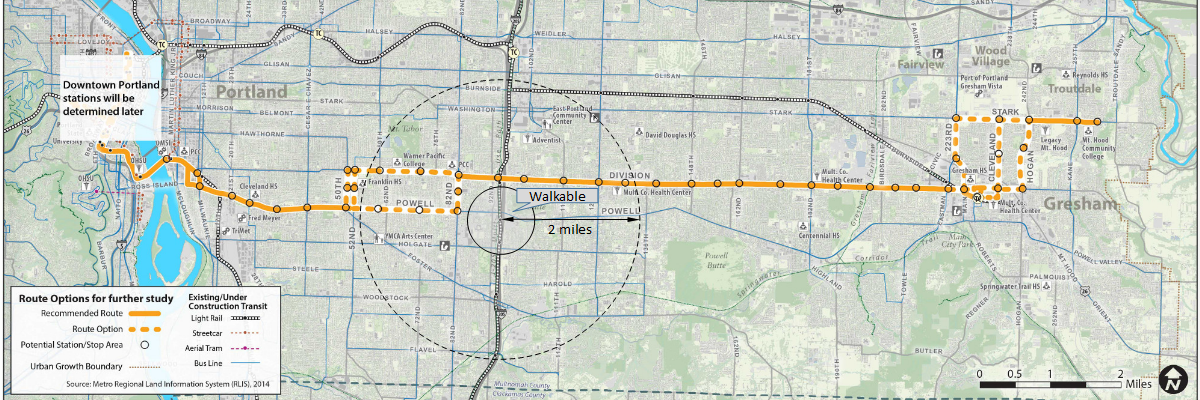Urban Mobility Blueprint: Difference between revisions
From Modelado Foundation
imported>Wpinfold (Created page with "= Challenges = *Transit Oriented Development works well for communities within ½ mile of transportation hub (3/4 sq miles) *Can we use technology to expand this to 2miles (12...") |
imported>Wpinfold No edit summary |
||
| Line 2: | Line 2: | ||
*Transit Oriented Development works well for communities within ½ mile of transportation hub (3/4 sq miles) | *Transit Oriented Development works well for communities within ½ mile of transportation hub (3/4 sq miles) | ||
*Can we use technology to expand this to 2miles (12½ Sq miles), servicing a larger community more cost effectively while maintaining the walkability score | *Can we use technology to expand this to 2miles (12½ Sq miles), servicing a larger community more cost effectively while maintaining the walkability score | ||
[[File:2mileradius.png]] | |||
*Can we use technology to increase safety and security at these transportation hubs thus improving ridership and reducing cost | *Can we use technology to increase safety and security at these transportation hubs thus improving ridership and reducing cost | ||
*Can we use these transit hubs for cargo, commuters and casual users | *Can we use these transit hubs for cargo, commuters and casual users | ||
*By making these improvements can we reduce costs so as to service all citizens in Portland and make all communities desirable and walkable reducing displacement | *By making these improvements can we reduce costs so as to service all citizens in Portland and make all communities desirable and walkable reducing displacement | ||
= Cargo = | = Cargo = | ||
*This last leg of the supply chain comprises up to 28% of the total cost to move goods. | *This last leg of the supply chain comprises up to 28% of the total cost to move goods. | ||
Revision as of 06:48, January 23, 2017
Challenges
- Transit Oriented Development works well for communities within ½ mile of transportation hub (3/4 sq miles)
- Can we use technology to expand this to 2miles (12½ Sq miles), servicing a larger community more cost effectively while maintaining the walkability score
- Can we use technology to increase safety and security at these transportation hubs thus improving ridership and reducing cost
- Can we use these transit hubs for cargo, commuters and casual users
- By making these improvements can we reduce costs so as to service all citizens in Portland and make all communities desirable and walkable reducing displacement
Cargo
- This last leg of the supply chain comprises up to 28% of the total cost to move goods.
- The last leg of delivery, ending up at the consumer's home has become more challenging with consumers away from home when deliveries are usually made
- This is particularly true when families have multiple jobs
- On demand home delivery, unattended delivery and pick up at transit hub are options for UPS, FedEx, USPS, DHL and others
- Use same chassis or even re-configure EV for cargo use off peak
Automation
- Vehicles equipped with safety and crash avoidance today
- Drivers from community sign up on app similar to Uber
- Demand pricing ensures plenty of drivers at peak times and off hours
- Tests routs and operations for future autonamy
- Test use of special routs: BRT Lanes, vehicle free paths Tilikum Crossing
